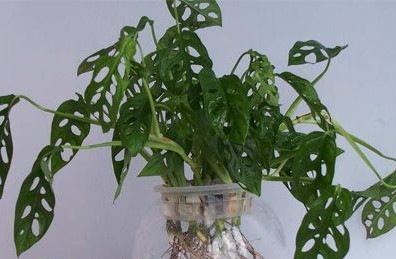How to cultivate mini-tortoise-backed bamboo
Potted mini tortoise back bamboo is relatively simple, the growing season on the indoor bright scattered light, winter near the south windowsill, so that it sees more sunshine, the growth is more robust. The suitable temperature for growth is 20-30 degrees Celsius, and the air temperature should be kept at 60%-80%. The overwintering room temperature should be kept above 12 degrees Celsius, otherwise it is vulnerable to cold damage.
During the growth period, it is necessary to keep the basin soil moist and spray water on the leaf surface, and apply compound fertilizer once or twice a month. If you can use extra-root topdressing in the peak growing season, applying it about once every half a month, it will grow more vigorously. The pot soil and propagation methods are the same as those of Phyllostachys pubescens.

Potted mini tortoise back bamboo, the growing season in the indoor bright scattered light, winter near the south windowsill, so that it can see more sunshine, the growth is more robust. The suitable temperature for growth is 20-30 ℃, and the air temperature is 60%-80%. The overwintering room temperature should be kept above 12 ℃, otherwise it is vulnerable to cold damage.
During the growth period, it is necessary to keep the basin soil moist and spray water on the leaf surface, and apply compound fertilizer once or twice a month. If you can use extra-root topdressing in the peak growing season, applying it about once every half a month, it will grow more vigorously. The pot soil and propagation methods are the same as those of Phyllostachys pubescens.
- Prev

What should be paid attention to in potted pocket coconut
Pocket coconut, famous sleeve, rare brown and so on. It is a small evergreen dwarf shrub of Palm family. Plant shape short; stem solitary, erect unbranched, dark green, with irregular ring pattern above; leaf pinnatifid, divided into lanceolate, dark green, leathery, glossy; flowers yellow, globular, blooming in late spring and early summer
- Next

What's the difference between mini tortoise back bamboo and tortoise back bamboo?
Mini tortoise back bamboo, window leaf turtle back bamboo, oblique leaf tortoise back bamboo. It belongs to the same genus as the tortoise back bamboo. The mini-tortoise-backed bamboo plant is short, and its perforation does not run through the pinnate lobes like the tortoise-backed bamboo, but through the long ovate leaves along the main vein, and the leaves are not divided.
Related
- Fuxing push coffee new agricultural production and marketing class: lack of small-scale processing plants
- Jujube rice field leisure farm deep ploughing Yilan for five years to create a space for organic food and play
- Nongyu Farm-A trial of organic papaya for brave women with advanced technology
- Four points for attention in the prevention and control of diseases and insect pests of edible fungi
- How to add nutrient solution to Edible Fungi
- Is there any good way to control edible fungus mites?
- Open Inoculation Technology of Edible Fungi
- Is there any clever way to use fertilizer for edible fungus in winter?
- What agents are used to kill the pathogens of edible fungi in the mushroom shed?
- Rapid drying of Edible Fungi

